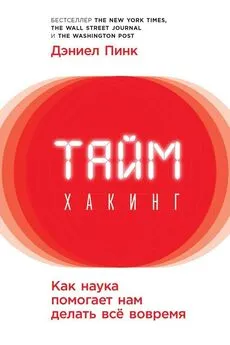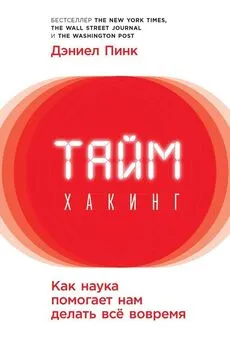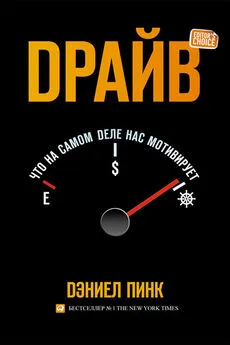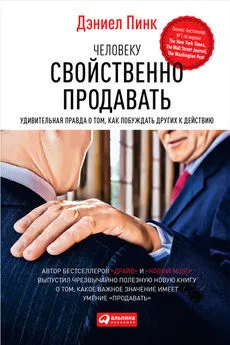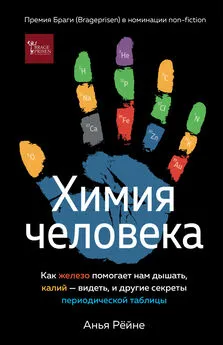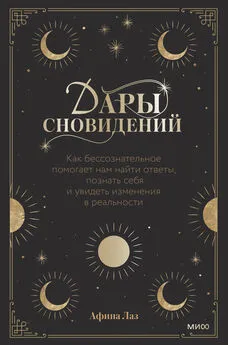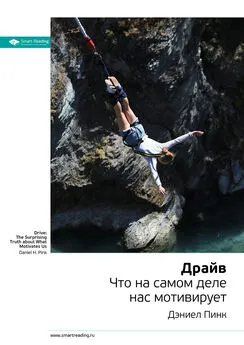Дэниель Пинк - Таймхакинг. Как наука помогает нам делать всё вовремя
- Название:Таймхакинг. Как наука помогает нам делать всё вовремя
- Автор:
- Жанр:
- Издательство:Литагент Альпина
- Год:2018
- Город:Москва
- ISBN:978-5-9614-1515-5
- Рейтинг:
- Избранное:Добавить в избранное
-
Отзывы:
-
Ваша оценка:
Дэниель Пинк - Таймхакинг. Как наука помогает нам делать всё вовремя краткое содержание
Таймхакинг. Как наука помогает нам делать всё вовремя - читать онлайн бесплатно ознакомительный отрывок
Интервал:
Закладка:
Обратите внимание, что это исследование проводилось еще до того, как Дональд Трамп стал президентом, а его твиты – частью политической жизни.
8
Более подробный рассказ об открытии де Мерана см.: Till Roenneberg, Internal Time: Chronotypes, Social Jet Lag, and Why You’re So Tired (Cambridge, MA: Harvard University Press, 2012), 31–35.
9
William J. Cromie, “Human Biological Clock Set Back an Hour,” Harvard University Gazette , July 15, 1999.
10
Peter Sheridan Dodds et al., “Temporal Patterns of Happiness and Information in a Global Social Network: Hedonometrics and Twitter,” PloS ONE6 , no. 12 (2011): e26752. См. также Riccardo Fusaroli et al., “Timescales of Massive Human Entrainment,” PloS ONE1 0, no. 4 (2015): e0122742.
11
Daniel Kahneman et al., “A Survey Method for Characterizing Daily Life Experience: The Day Reconstruction Method,” Science 306, no. 5702 (2004): 1776–1780.
12
Arthur A. Stone et al., “A Population Approach to the Study of Emotion: Diurnal Rhythms of a Working Day Examined with the Day Reconstruction Method,” Emotion 6, no. 1 (2006): 139–149.
13
Jing Chen, Baruch Lev, and Elizabeth Demers, “The Dangers of Late-Afternoon Earnings Calls,” Harvard Business Review , October 2013.
14
Jing Chen, Baruch Lev, and Elizabeth Demers, “The Dangers of Late-Afternoon Earnings Calls,” Harvard Business Review , October 2013.
15
Jing Chen, Elizabeth Demers, and Baruch Lev, “Oh What a Beautiful Morning! Diurnal Variations in Executives’ and Analysts’ Behavior: Evidence from Conference Calls.” (Электронная версия: https://www.darden.virginia.edu.uploadedfiles/darden_web/content/faculty_research/seminars_and_conferences/CDL_March_2016.pdf.)
16
Jing Chen, Elizabeth Demers, and Baruch Lev, “Oh What a Beautiful Morning! Diurnal Variations in Executives’ and Analysts’ Behavior: Evidence from Conference Calls.” (Электронная версия: https://www.darden.virginia.edu.uploadedfiles/darden_web/content/faculty_research/seminars_and_conferences/CDL_March_2016.pdf.)
17
Amos Tversky and Daniel Kahneman, “Extensional Versus Intuitive Reasoning: The Conjunction Fallacy in Probability Judgment,” Psychological Review 90, no. 4 (1983): 293–315.
18
Galen V. Bodenhausen, “Stereotypes as Judgmental Heuristics: Evidence of Circadian Variations in Discrimination,” Psychological Science 1, no. 5 (1990): 319–322.
19
Galen V. Bodenhausen, “Stereotypes as Judgmental Heuristics: Evidence of Circadian Variations in Discrimination,” Psychological Science 1, no. 5 (1990): 319–322.
20
Russell G. Foster and Leon Kreitzman, Rhythms of Life: The Biological Clocks That Control the Daily Lives of Every Living Thing (New Haven, CT: Yale University Press, 2005), 11.
21
Carolyn B. Hines, “Time-of-Day Effects on Human Performance,” Journal of Catholic Education 7, no. 3 (2004): 390–413, citing Tamsin L. Kelly, Circadian Rhythms: Importance for Models of Cognitive Performance , U. S. Naval Health Research Center Report, no. 96–1 (1996): 1–24.
22
Simon Folkard, “Diurnal Variation in Logical Reasoning,” British Journal of Psychology 66, no. 1 (1975): 1–8; Timothy H. Monk et al., “Circadian Determinants of Subjective Alertness,” Journal of Biological Rhythms 4, no. 4 (1989): 393–404.
23
Robert L. Matchock and J. Toby Mordkoff, “Chronotype and Time-of-Day Influences on the Alerting, Orienting, and Executive Components of Attention,” Experimental Brain Research 192, no. 2 (2009): 189–198.
24
Hans Henrik Sievertsen, Francesca Gino, and Marco Piovesan, “Cognitive Fatigue Influences Students’ Performance on Standardized Tests,” Proceedings of the National Academy of Sciences 113, no. 10 (2016): 2621–2624.
25
Nolan G. Pope, “How the Time of Day Affects Productivity: Evidence from School Schedules,” Review of Economics and Statistics 98, no. 1 (2016): 1–11.
26
Mareike B. Wieth and Rose T. Zacks, “Time of Day Effects on Problem Solving: When the Non-optimal Is Optimal,” Thinking & Reasoning 17, no. 4 (2011): 387–401.
27
Lynn Hasher, Rose T. Zacks, and Cynthia P. May, “Inhibitory Control, Circadian Arousal, and Age,” в Daniel Gopher and Asher Koriat, eds., Attention and Performance XVII: Cognitive Regulation of Performance: Interaction of Theory and Application (Cambridge, MA: MIT Press, 1999), 653–675.
28
Cindi May, “The Inspiration Paradox: Your Best Creative Time Is Not When You Think,” Scientific American , March 6, 2012.
29
Mareike B. Wieth and Rose T. Zacks, “Time of Day Effects on Problem Solving: When the Non-optimal Is Optimal,” Thinking & Reasoning 17, no. 4 (2011): 387–401.
30
Inez Nellie Canfield McFee, The Story of Thomas A. Edison (New York: Barse & Hopkins, 1922).
31
Till Roenneberg et al., “Epidemiology of the Human Circadian Clock,” Sleep Medicine Reviews 11, no. 6 (2007): 429–438.
32
Ana Adan et al., “Circadian Typology: A Comprehensive Review,” Chronobiology International 29, no. 9 (2012): 1153–75; Franzis Preckel et al., “Chronotype, Cognitive Abilities, and Academic Achievement: A Meta-Analytic Investigation,” Learning and Individual Differences 21, no. 5 (2011): 483–492; Till Roenneberg, Anna Wirz-Justice, and Martha Merrow, “Life Between Clocks: Daily Temporal Patterns of Human Chronotypes,” Journal of Biological Rhythms 18, no. 1 (2003): 80–90; Iwona Chelminski et al., “Horne and Ostberg Questionnaire: A Score Distribution in a Large Sample of Young Adults,” Personality and Individual Differences 23, no. 4 (1997): 647–652; G. M. Cavallera and S. Giudici, “Morningness and Eveningness Personality: A Survey in Literature from 1995 up till 2006.” Personality and Individual Differences 44, no. 1 (2008): 3–21.
33
Renuka Rayasam, “Why Sleeping In Could Make You a Better Worker,” BBC Capital , February 25, 2016.
34
Markku Koskenvuo et al., “Heritability of Diurnal Type: A Nationwide Study of 8753 Adult Twin Pairs,” Journal of Sleep Research 16, no. 2 (2007): 156–162; Yoon-Mi Hur; Thomas J. Bouchard, Jr., and David T. Lykken, “Genetic and Environmental Influence on Morningness-Eveningness,” Personality and Individual Differences 25, no. 5 (1998): 917–925.
35
Одно из возможных объяснений этого феномена: родившиеся в менее светлое время года достигают ежедневного циркадного пика раньше, чтобы в полной мере воспользоваться ограниченным количеством дневного света. См: Vincenzo Natale and Ana Adan, “Season of Birth Modulates Morning-Eveningness Preference in Humans,” Neuroscience Letters 274, no. 2 (1999): 139–141; Hervé Caci et al., “Transcultural Properties of the Composite Scale of Morningness: The Relevance of the ‘Morning Affect’ Factor,” Chronobiology International 22, no. 3 (2005): 523–540.
36
Till Roenneberg et al., “A Marker for the End of Adolescence,” Current Biology 14, no. 24 (2004): R1038–1039.
37
Till Roenneberg et al., “Epidemiology of the Human Circadian Clock,” Sleep Medicine Reviews 11, no. 6 (2007): 429–438; See also Ana Adan et al., “Circadian Typology: A Comprehensive Review,” Chronobiology International 29, no. 9 (2012): 1153–1175.
38
Ana Adan et al., “Circadian Typology: A Comprehensive Review,” Chronobiology International 29, no. 9 (2012): 1153–1175. See also Ryan J. Walker et al., “Age, the Big Five, and Time-of-Day Preference: A Mediational Model,” Personality and Individual Differences 56 (2014): 170–174; Christoph Randler, “Proactive People Are Morning People,” Journal of Applied Social Psychology 39, no. 12 (2009): 2787–2797; Hervé Caci, Philippe Robert, and Patrice Boyer, “Novelty Seekers and Impulsive Subjects Are Low in Morningness,” European Psychiatry 19, no. 2 (2004): 79–84; Maciej Stolarski, Maria Ledzińska, and Gerald Matthews, “Morning Is Tomorrow, Evening Is Today: Relationships Between Chronotype and Time Perspective,” Biological Rhythm Research 44, no. 2 (2013): 181–196.
39
Renée K. Biss and Lynn Hasher, “Happy as a Lark: Morning-Type Younger and Older Adults Are Higher in Positive Affect,” Emotion 12, no. 3 (2012): 437–441.
40
Ryan J. Walker et al., “Age, the Big Five, and Time-of-Day Preference: A Mediational Model,” Personality and Individual Differences 56 (2014): 170–174; Christoph Randler, “Morningness-Eveningness, Sleep-Wake Variables and Big Five Personality Factors,” Personality and Individual Differences 45, no. 2 (2008): 191–196.
41
Ana Adan, “Chronotype and Personality Factors in the Daily Consumption of Alcohol and Psychostimulants,” Addiction 89, no. 4 (1994): 455–462.
42
Ji Hee Yu et al., “Evening Chronotype Is Associated with Metabolic Disorders and Body Composition in Middle-Aged Adults,” Journal of Clinical Endocrinology & Metabolism 100, no. 4 (2015): 1494–1502; Seog Ju Kim et al., “Age as a Moderator of the Association Between Depressive Symptoms and Morningness-Eveningness,” Journal of Psychosomatic Research 68, no. 2 (2010): 159–164; Iwona Chelminski et al., “Horne and Ostberg Questionnaire: A Score Distribution in a Large Sample of Young Adults,” Personality and Individual Differences 23, no. 4 (1997): 647–652; Michael D. Drennan et al., “The Effects of Depression and Age on the Horne-Ostberg Morningness-Eveningness Score,” Journal of Affective Disorders 23, no. 2 (1991): 93–98; Christoph Randler et al., “Eveningness Is Related to Men’s Mating Success,” Personality and Individual Differences 53, no. 3 (2012): 263–267; J. Kasof, “Eveningness and Bulimic Behavior,” Personality and Individual Differences 31, no. 3 (2001): 361–369.
43
Kai Chi Yam, Ryan Fehr, and Christopher M. Barnes, “Morning Employees Are Perceived as Better Employees: Employees’ Start Times Influence Supervisor Performance Ratings,” Journal of Applied Psychology 99, no. 6 (2014): 1288–1299.
Читать дальшеИнтервал:
Закладка:
